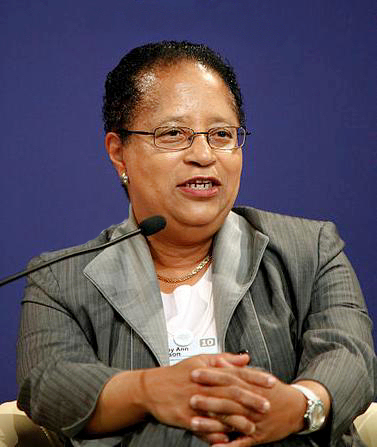
Every Black History Month, we highlight the figures and events that have paved the way for our lives today.
However, during Black History Month, we should not only pay homage to the well known but also to the more obscure figures and events.
Dr. Rebecca Lee Crumpler (1831 – 1895)

The name Rebecca Lee Crumpler should be synonymous with Black Girl Magic.
Born Rebecca Davis, she was born in Delaware and grew up Pennsylvania where she gained her passion for helping people through watching her aunt who was a caretaker.
After graduating from the West-Newton English and Classical School in 1852, she worked as a nurse and got accepted into the New England Female Medical College in 1860.
In 1864, Lee became the New England Female Medical College’s only African-American graduate and the first Black female physician.
Black Wall Street

Black Wall Street, located in Tulsa, OK, was the pinnacle of Black Excellence in the early 20th century.
Black Wall Street was the black version of Wall Street where we had our own businesses, hospitals, schools and theaters.
Of course, they couldn’t have anything great for too long and on May 31, 1921, its thirty-five blocks were burned down after a race riot caused by rape allegations.
Three hundred people died, 800 were injured and more than $30 million in damages as a result.
Black Cowboys and Cowgirls

Contrary to popular belief and white Hollywood, we had cowboys out in these streets, too.
Most were newly freed slaves that had migrated west to find better lives for themselves through ranching and farming.
Although they also faced racism and discrimination,
Black cowboys were pivotal in the Old West because they did the dirty work that other cowboys didn’t want to do, like wrangling cattle.
Some of the most notable are Bill Pickett, whose skill made him become the first black inductee to the National Rodeo Hall of Fame and Mary ‘Stagecoach Mary’ Fields, who became the first Black female star route mail carrier.
Dr. Shirley Ann Jackson (1946 – )

Women in STEM were killing the game and Dr. Shirley Ann Jackson was one of them. Born in 1946 in the nation’s capital, Jackson always had a knack for science.
She enrolled into Massachusetts Institute of Technology (MIT) in 1964 where she majored in physics.
She eventually became the first black woman to earn a PhD from the institution in 1973.
Jackson was the brilliant mind behind the technology of the portable fax machine, fiber optic cables, touch-tone phones, call waiting, and caller ID.
Jackson broke other barriers as the first black woman to be elected president and then chairman of the board of the American Association for the Advancement of Science.
She became president of a major research university, elected to the National Academy of Engineering and was also both the first African American and the first woman to chair the U.S. Nuclear Regulatory Commission.
Next time you look at your phone and decide to ignore the “DO NOT ANSWER” call, be sure to thank Dr. Jackson for that.
William H. Hastie (1904 – 1976)

William H. Hastie was born in Knoxville, TN, subsequently moved to Washington D.C. and after high school, attended Amherst College in Massachusetts.
After he graduated with his B.A. in 1925, he worked at a few fellowships until he went to Harvard Law in 1927 and graduated in 1930.
A few years later, Hastie joined the Howard Law Faculty, received his J.D., served as President Franklin Roosevelt’s race relations advisor.
In March 1937, President Roosevelt appointed Hastie as judge of the Federal District Court in the Virgin Islands.
This made him the nation’s first Black Federal judge before being appointed as Governor in 1946.
This also made Hastie the U.S. Virgin Island’s first Black governor and the first Black governor of a U.S. Territory.






